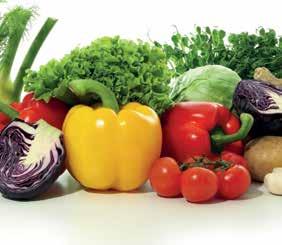

ABOUT MAIZER
We work towards developing solutions that improve and increase global animal nutrition production

GRANULAR

CHARACTERISTICS
This product is suitable for all types of cultivation. provides a balanced supply of essential nutrients. Enhances the uptake of magnesium and sulfur by plants.
MAIZER line offers complex granular fertilizers specially designed for both basal and top dressing fertilizations in various types of cultivations. Some of MAIZER line products provide a generous supply of sulfur and magnesium.
MAIZER products stand out for their consistent granule size, high solubility, and slightly acidic reaction, attributed to the presence of sulfur from sulfuric anhydride, which is soluble in water. This enhances the availability of essential nutrients in the soil, preventing deficiencies and physiological disorders, and ultimately improving the quality of the crop yield.

Total nitrogen (N) of which
Nitrogen (N) Nitric
Ammonia Nitrogen (N)
Phosphoric Anhydride (P2O5)
soluble in neutral ammonium citrate and water
Potassium Oxide (K2O) soluble in water
Magnesium Oxide (MgO) soluble in water
Total Sulfur Trioxide (SO3)
Zinc (Zn)
Flower and ornamental
Fruit
Industrial Horticultural
200-400 kg / ha
400-600 kg / ha
400-600 kg / ha
400-800 kg / ha

APPLICATION PERIOD
in coverage at the end of winter at sowing at transplanting

CHARACTERISTICS
Balanced NPK Ratio: The 12-11-18 NPK ratio ensures plants receive adequate nitrogen, phosphorus, and potassium, supporting overall growth and health.
Promotes Growth: NPK 12-11-18 stimulates leafy green growth, strengthens stems, and improves plant vitality. Enhances Flowering and Fruiting: The phosphorus content encourages root development, flower formation, and improves fruit quality and yield. Supports Resilience: Higher potassium concentration enhances plant resilience, aiding in water and nutrient uptake and helping plants withstand stress. Improves Nutrient Availability: Essential macronutrients in NPK 12-11-18 prevent nutrient deficiencies and maintain soil nutrient balance. Versatile Application: Suitable for various plants, including vegetables, fruits, flowers, and ornamentals. Convenient Nutrient Management: Simplifies nutrient management with a balanced composition, reducing the need for multiple fertilizers.

COMPOSITION
Total nitrogen (N)
Phosphoric Anhydride (P2O5)
Potassium Oxide (K2O) soluble in water

PLANTS DOSAGES
Tomato, Pepper, Cucumber, Eggplant, etc
Potato, Onion, Cabbage, Carrot, Zucchini, etc
Wheat, Barley, Oats, Rye, etc.
Forage crops, Greenfield
Corn
Tobacco, Sugar Beet, Cotton
Canola, Sunflower
Vineyard
Peach, Cherry, Plum, Apricot and etc.
Apple, Pear, Quince and etc.
15-20
15-20
20-25
10-15
20-25
10-15
10-15
15-20
15-20
20-25

CHARACTERISTICS
Balanced Nutrient Supply: The NPK ratio of 15:30 ensures plants receive a balanced supply of nitrogen, phosphorus, and potassium, promoting healthy growth and development. Enhanced Plant Productivity: The higher phosphorus content in NPK 15:30 stimulates root development, leading to improved nutrient uptake and enhanced plant productivity. Increased Crop Yield: The higher potassium content supports fruiting and flowering, resulting in increased crop yield and improved quality. Sulfur Enrichment: The addition of 11% sulfur (S) in NPK 15:30 helps improve plant metabolism and protein synthesis, promoting overall plant health and vitality. Improved Stress Tolerance: Adequate nutrient supply, including nitrogen, phosphorus, potassium, and sulfur, enhances plant resilience and helps plants cope with environmental stresses such as drought, disease, and nutrient deficiencies. Versatile Application: NPK 15:30 + 11% S can be used for a wide range of crops, including grains, fruits, vegetables, and ornamental plants, making it a versatile choice for farmers and gardeners. Simplified Fertilizer Management: With its comprehensive nutrient profile, NPK 15:30 + 11% S simplifies fertilizer management by providing a combination of essential nutrients in appropriate ratios, reducing the need for multiple fertilizers

COMPOSITION
Nitrogen (N)
Phosphorus (P)
Sulfur (S)
15 30 11

PLANTS DOSAGES
Tomato, Pepper, Cucumber, Eggplant, etc
Potato, Onion, Cabbage, Carrot, Zucchini, etc
Wheat, Barley, Oats, Rye, etc.
Forage crops, Greenfield
Corn
Tobacco, Sugar Beet, Cotton
Canola, Sunflower
Vineyard
Peach, Cherry, Plum, Apricot and etc.
Apple, Pear, Quince and etc.
15-20
15-20
20-25
10-15
20-25
10-15
10-15
15-20
15-20
20-25
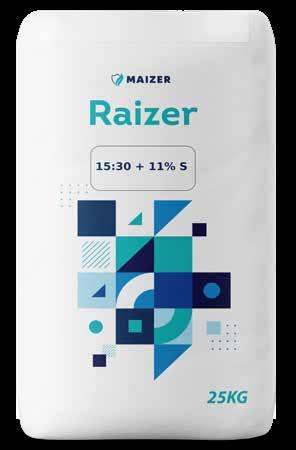
CHARACTERISTICS
Balanced nutrient supply: NPK 8-15-15 provides a balanced ratio of nutrients to plants. The moderate nitrogen content (8%) promotes healthy foliage growth, while the higher phosphorus content (15%) supports root development, flowering, and fruiting. The potassium content (15%) contributes to disease resistance, water regulation, and overall plant health. Root development and flowering: The higher phosphorus content in NPK 8-15-15 helps stimulate root development and strengthens plants› ability to absorb nutrients and water. Additionally, it supports the production of flowers and enhances flowering potential. Fruit and seed production: Adequate phosphorus and potassium levels in NPK 8-15-15 are essential for fruit and seed development. Phosphorus plays a crucial role in energy transfer, leading to increased yield and improved fruit quality. Potassium aids in fruit maturation, promotes seed formation, and enhances plant resistance to diseases and stress. Soil fertility maintenance: Nitrogen in NPK 8-15- 15 helps replenish and maintain soil fertility by supporting plant growth and nutrient utilization. It encourages lush foliage and overall plant vigor. Versatile application: NPK 8-15-15 can be used for a wide range of crops, including vegetables, fruits, ornamentals, and field crops. It provides a balanced nutrient supply suitable for various plants. Easy handling and application: NPK 8-15-15 fertilizer is available in different forms, such as granules or powder, making it convenient to handle and apply. It can be easily spread by hand or using fertilizer spreaders.

COMPOSITION
Nitrogen (N)
Phosphoric Anhydride (P2O5)
Potassium Oxide (K2O) soluble in water
8 15 15

PLANTS DOSAGES
Wheat
Corn
Sunflower
Soya
Rapeseed
Barley
Fruits
Pasture
200-450 kg / ha
250-450 kg / ha
200-400 kg / ha
250-350 kg / ha
250-400 kg / ha
250-400 kg / ha
300 – 600 kg/ha
300 – 500 kg/ha

CHARACTERISTICS
NPK 6-12-24: a balanced nutrient supply for plants. It offers optimal ratios of nitrogen (6%), phosphorus (12%), and potassium (24%). Benefits include: Balanced nutrition: Supports healthy foliage growth (low nitrogen), root development (moderate phosphorus), and overall plant health (high potassium). Root development and nutrient uptake: Enhances root system, nutrient uptake, water absorption, and plant vitality. Flowering and fruiting: Promotes flower formation, fruit development, and quality. Enhances disease resistance. Stress tolerance and disease resistance: Helps plants withstand stress, temperature fluctuations, and diseases. Improves water regulation and cellular functions. Suitable for specific crops: Ideal for fruit trees, flowering plants, and crops with extensive flowering and fruiting stages. Versatile application: Suitable for agriculture and horticulture. Works well with vegetables, fruits, ornamentals, and field crops.
Primary justifications for implementation:
• An exceptional remedy for crops with specific potassium (K) needs.
• Demonstrates a notable effectiveness in utilizing nitrogen (N) in the form of ammonium.
• Comprises easily soluble phosphorous (P).
• Encourages the robustness of arable crops.
• Represents an economically viable formulation.

COMPOSITION
Nitrogen (N)
Phosphoric Anhydride (P2O5)
Potassium Oxide (K2O) soluble in water
6 12 24

PLANTS DOSAGES
Sugar beet
Rapeseed
Fruits
Vegetables
Sunflower
Wheat
Corn
Soya
500-700 kg / ha
250-400 kg / ha
350-800 kg / ha
400-900 kg / ha
250-350 kg / ha
300-400 kg / ha
300 – 600 kg/ha
250 – 400 kg/ha

CHARACTERISTICS
NPK 6-24-12: a balanced nutrient supply for plants. It offers optimal ratios of nitrogen (6%), phosphorus (24%), and potassium (12%). Key points include: Balanced nutrition: Supports healthy foliage growth (low nitrogen), root development (high phosphorus), and overall plant health (moderate potassium). Strong root development: High phosphorus content promotes robust root systems, improving nutrient and water uptake and enhancing plant vigor. Flowering and fruiting: Adequate phosphorus levels stimulate flower formation and fruit development, leading to improved yield and quality. Enhances plant health and stress tolerance: Potassium content improves plant health, water regulation, and helps plants withstand environmental stressors like drought and disease. Suitable for various crops: Ideal for vegetables, fruits, ornamentals, and field crops, providing balanced growth and development across different plant species. Versatile application: Applicable to agricultural and horticultural settings, including soil-based cultivation, container gardening, and hydroponics.
Primary rationales for implementation:
• Exceptional remedy for crops with specific phosphorus (P) needs.
• Remarkable efficiency in utilizing nitrogen (N) in the form of ammonium. • Contains easily soluble phosphorus (P). • The presence of secondary macro elements calcium (Ca) and sulfur (S) impacts nitrogen absorption, various enzyme processes, protein synthesis, and enhances plant resilience to stress conditions. • The presence of zinc (Zn) improves the synthesis of plant hormone (auxin), chlorophyll, and carbohydrates. • Promotes enhanced growth of plants during the initial stages of development. • Represents a formulation that is economically viable.
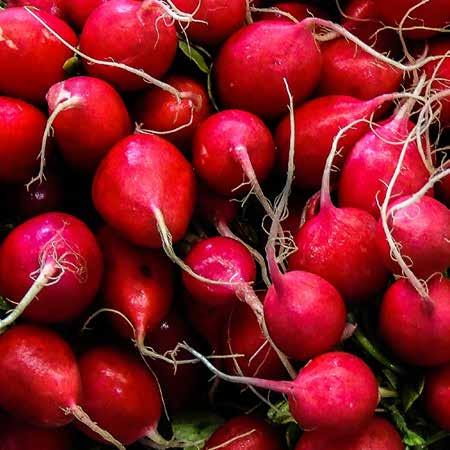
COMPOSITION
Nitrogen (N)
Phosphoric Anhydride (P2O5)
Potassium Oxide (K2O) soluble in water
6 24 12

PLANTS DOSAGES
Wheat
Barley
Corn
Soya
Sunflower
Rapeseed
Fruits
Vegetables
Pastures
300 – 400 kg/ha
250 – 400 kg/ha
300 – 450 kg/ha
250 – 400 kg/ha
200 – 400 kg/ha
250 – 450 kg/ha
300 – 650 kg/ha
300 – 700 kg/ha
300 – 500 kg/ha

CHARACTERISTICS
NPK 7-20-30: promotes flowering, root development, and overall plant health. Key benefits include: Flowering and fruiting promotion: High phosphorus content aids flower formation, pollination, and fruit development, leading to improved yields and fruit quality. Root development support: Moderate nitrogen content facilitates the growth of a robust root system, enabling efficient nutrient and water absorption. Enhanced plant health: Balanced nutrient ratio with higher potassium content improves overall plant health, vigor, stress tolerance, and disease resistance. Improved nutrient uptake: Adequate phosphorus levels enhance nutrient absorption, ensuring optimal growth and development. Suitable for high-demand crops: Ideal for flowering plants, fruit trees, and crops with extended flowering and fruiting periods that require higher phosphorus and potassium levels. Versatile application: Can be used in various agricultural and horticultural settings, including field crops, orchards, and greenhouse production.
Primary rationales for implementation:
• Comprehensive inclusion of essential macro and micro elements crucial for successful crop production. • An outstanding solution for crops with specific phosphorus (P) and potassium (K) requirements. • Enhanced utilization of phosphorus (P) and potassium (K) throughout the growth phase of the crops. • Significant influence on the development of desirable characteristics and quantities of the fruits. • Ensures consistent and targeted supply of highly accessible nutrients to plants. • The presence of secondary macro element sulfur (S) enhances the efficient utilization of nitrogen, synthesis of proteins and chlorophyll, and the activity of various enzymes

COMPOSITION
Nitrogen (N)
Phosphoric Anhydride (P2O5)
Potassium Oxide (K2O) soluble in water
7 20 30

PLANTS DOSAGES
Fruits
Vegetables
Sugar beet
Rapeseed
Corn
Sunflower
Wheat
Soya
350 – 700 kg/ha
400 – 700 kg/ha
400 – 600 kg/ha
200 – 400 kg/ha
200 – 500 kg/ha
200 – 400 kg/ha
200 – 400 kg/ha
150 – 300 kg/ha
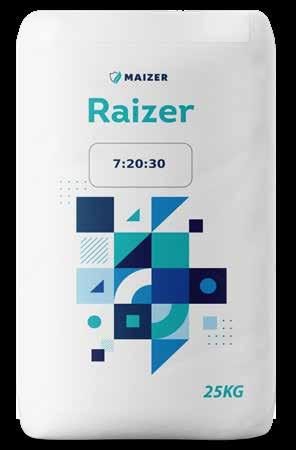
CHARACTERISTICS
Promotes root development: The high phosphorus content in NPK 20-30 is particularly beneficial for promoting root development. Phosphorus plays a crucial role in root formation, elongation, and overall root system establishment. It helps plants absorb water and nutrients from the soil, leading to healthier and more vigorous plants. Stimulates flowering and fruiting: The substantial phosphorus level in NPK 20-30 supports flowering and fruiting in plants. Phosphorus is essential for flower initiation, pollination, and fruit development. It encourages abundant blooms, improves fruit set, and enhances the quality and size of fruits. Enhances early growth and establishment: The high nitrogen content in NPK 20-30 promotes early growth and establishment of plants. Nitrogen is a vital component of amino acids, proteins, and chlorophyll, which are essential for plant growth and development. It stimulates leaf growth, enhances photosynthesis, and contributes to overall plant vigor during the early stages of growth. Suitable for phosphorus-demanding crops: NPK 20-30 is particularly useful for crops that have a high demand for phosphorus but require limited potassium. It is commonly used for crops such as root vegetables (carrots, potatoes), bulbs, and flowering plants. Corrects phosphorus deficiencies: NPK 20-30 can be employed to correct phosphorus deficiencies in soil. If a soil analysis reveals low phosphorus levels, applying this fertilizer can help replenish the nutrient and restore optimal nutrient balance
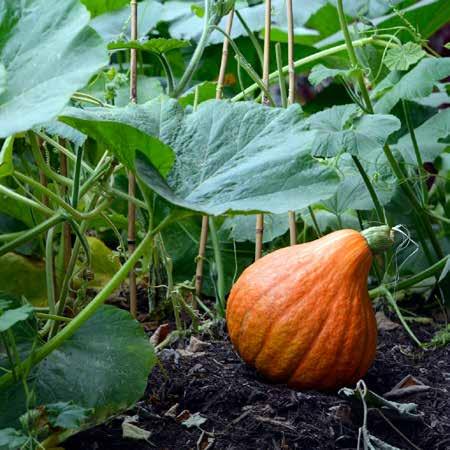
COMPOSITION
Nitrogen (N)
Phosphoric Anhydride (P2O5)
Potassium Oxide (K2O) soluble in water

PLANTS DOSAGES
MAIZER line offers complex granular fertilizers specially designed for both basal and top dreolubility, and slightly acidic reaction, ating deficiencies and physiological disorders, and ultimately improving the quality of the crop yield.
MAIZER line offers complex granular fertilizers specially designed for both basal and top dreolubility, and slightly acidic reaction, op yield.
APPLICATION PERIOD
in coverage at the end of winter at sowing at transplanting
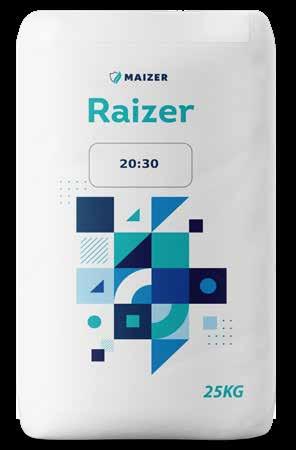
CHARACTERISTICS
NPK 7-21-21: a balanced nutrient supply for plants. It offers optimal ratios of nitrogen (7%), phosphorus (21%), and potassium (21%). Key points include: Balanced nutrition: Supports healthy foliage growth (moderate nitrogen), root development (higher phosphorus), and overall plant health (equal potassium). Root development and nutrient uptake: High phosphorus content promotes strong root systems, improving nutrient and water uptake and enhancing plant vitality. Flowering and fruiting: Adequate phosphorus and potassium levels stimulate flower formation, fruit development, and quality. Enhances disease resistance. Enhances overall plant health: Balanced nutrient ratio with equal potassium and phosphorus levels improves plant health, stress tolerance, and resistance to diseases. Suitable for various crops: Ideal for vegetables, fruits, ornamentals, and field crops, providing balanced growth and development across different plant species. Versatile application: Applicable to agricultural and horticultural settings, including soil-based cultivation, container gardening, and hydroponics.
Primary rationales for implementation:
• An exceptional solution for crops that exhibit a specific need for phosphorus (P) and potassium (K). • High efficiency in utilizing ammonium forms of nitrogen (N). • Improved utilization of phosphorus (P) and potassium (K) throughout the vegetation period. • The presence of zinc (Zn) enhances the synthesis of plant hormone (auxin), chlorophyll, and carbohydrates. • Sulfur (S) plays a crucial role in protein synthesis, stimulates plant enzyme activities, and is vital in nitrogen metabolism. • Significant impact on the development of both qualitative and quantitative characteristics of the fruit. • Provides a continuous and targeted supply of highly affordable nutrients to plants.

COMPOSITION
Nitrogen (N)
Phosphoric Anhydride (P2O5)
Potassium Oxide (K2O) soluble in water
7 21 21

PLANTS DOSAGES
Sugar beet
Rapeseed
Fruits
Vegetables
Sunflower
Wheats
Corn
Soya
400 – 700 kg/ha
200 – 400 kg/ha
350 – 600 kg/ha
400 – 800 kg/ha
200 – 400 kg/ha
200 – 400 kg/ha
200 – 500 kg/ha
200 – 300 kg/ha
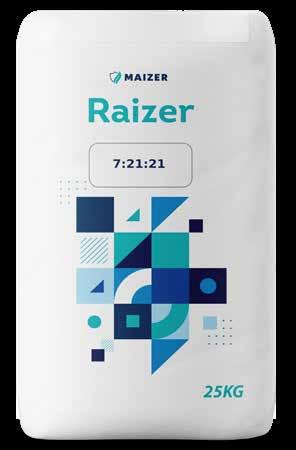
CHARACTERISTICS
Promotes root development: The high phosphorus content in NPK 10-20 is particularly beneficial for promoting root development. Phosphorus is essential for root formation, elongation, and overall root system establishment. It helps plants absorb water and nutrients from the soil, leading to healthier and more vigorous root growth. Stimulates early growth: The higher nitrogen content in NPK 10-20 stimulates early plant growth and vegetative development. Nitrogen is a vital component of amino acids, proteins, and chlorophyll, which are essential for plant growth and leaf production. It promotes the development of lush foliage and supports overall plant vigor. Enhances flowering and fruiting: Phosphorus plays a crucial role in promoting flowering and fruiting in plants. The substantial phosphorus level in NPK 1020 supports flower initiation, pollination, and fruit development. It can lead to increased flowering, improved fruit set, and enhanced fruit quality. Corrects phosphorus deficiencies: NPK 1020 can be used to correct phosphorus deficiencies in soil. If a soil analysis reveals low phosphorus levels, applying this fertilizer can help replenish the nutrient and restore optimal nutrient balance. Suitable for specific crops and situations: NPK 10-20 is particularly useful for crops that require higher phosphorus levels and have limited potassium requirements. It is commonly used for crops such as legumes, root vegetables, and crops in the early growth stages. Versatile application: NPK 10-20 can be used in various agricultural and horticultural applications. It can be applied during planting or as a top-dressing fertilizer for established plants.

Nitrogen (N)
Phosphoric Anhydride (P2O5)
Potassium Oxide (K2O) soluble in water
COMPOSITION PLANTS DOSAGES
Flower and ornamental
Fruit
Industrial
Horticultural
200-400 kg / ha
400-600 kg / ha
400-600 kg / ha
400-800 kg / ha

in coverage at the end of winter at sowing at transplanting

CHARACTERISTICS
Balanced Nutrition: The equal proportions of Nitrogen (N), Phosphorus (P), and Potassium (K) in NPK 15-15-15 ensure a wellbalanced nutrient supply for plants. These essential elements are vital for various physiological processes, including root development, flowering, fruiting, and overall plant growth.
Enhanced Plant Growth: The optimal combination of N, P, and K in NPK 15-15-15 promotes vigorous plant growth. Nitrogen supports leaf and stem growth, phosphorus aids in root development and energy transfer, while potassium regulates water and nutrient uptake, and enhances overall plant health. Increased Nutrient
Availability: The presence of sulfur (SO3) in NPK 15-15-15 helps improve the availability of nutrients for plants. Sulfur plays a crucial role in converting previously bound nutrients in the soil into a soluble form, enabling easy uptake by plants. pH Regulation: The sulfur content in NPK 15-15-15 also acts as a pH regulator for the soil. It helps maintain an optimal pH level, creating a favorable environment for nutrient absorption and microbial activity.
Chlorine-Free: NPK 15-15-15 does not contain chlorine, which is beneficial for sensitive plants that may be negatively affected by high chlorine levels. This fertilizer avoids any potential harm caused by chlorine accumulation in the soil. Long-Lasting Effects: 15-15-15 is a slow-release fertilizer, providing a steady and prolonged nutrient supply to plants. This gradual release ensures sustained nourishment, reducing the risk of nutrient deficiency or excess.

COMPOSITION
Nitrogen (N)
Phosphoric Anhydride (P2O5)
Potassium Oxide (K2O) soluble in water
15 15 15

PLANTS DOSAGES
Tomato, Pepper, Cucumber, Eggplant, etc
Potato, Onion, Cabbage, Carrot, Zucchini, etc
Wheat, Barley, Oats, Rye, etc.
Forage crops, Greenfield
Corn
Tobacco, Sugar Beet, Cotton
Canola, Sunflower
Vineyard
Peach, Cherry, Plum, Apricot and etc.
Apple, Pear, Quince and etc.
15-20 Kg / Decare
15-20 Kg / Decare
20-25 Kg / Decare
10-15 Kg / Decare
20-25 Kg / Decare
10-15 Kg / Decare
10-15 Kg / Decare
15-20 Kg / Decare
15-20 Kg / Decare
20-25 Kg / Decare
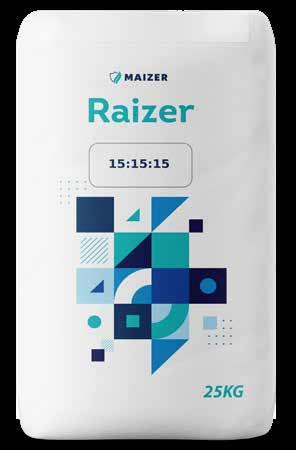
CHARACTERISTICS
Balanced nutrient supply: NPK 6-16-16 provides a balanced ratio of nutrients to plants. The lower nitrogen content (6%) supports healthy foliage growth without excessive vegetative growth. The moderate phosphorus content (16%) promotes root development, flowering, and fruiting. The equal potassium content (16%) enhances overall plant health, stress tolerance, and disease resistance. Root development and nutrient uptake: The phosphorus content in NPK 6-16-16 is particularly beneficial for root development. It helps plants establish a strong and healthy root system, improving nutrient and water uptake, and overall plant vitality. Flowering and fruiting: Adequate phosphorus and potassium levels in NPK 6-16-16 are essential for promoting flowering and fruiting in plants. Phosphorus plays a vital role in flower formation and stimulates the development of fruits. Potassium contributes to fruit quality, maturation, and enhances the plant›s ability to resist diseases and stress. Enhances overall plant health: The balanced ratio of nutrients in NPK 6-16-16, with equal phosphorus and potassium levels, contributes to overall plant health and vigor. Potassium supports various physiological processes, including photosynthesis, enzyme activation, and water regulation. It improves stress tolerance, disease resistance, and strengthens plants› ability to withstand adverse environmental conditions. Suitable for various crops: NPK 6-16-16 is suitable for a wide range of crops, including vegetables, fruits, ornamentals, and field crops. It provides the necessary nutrients for balanced growth and development in different plant species. Versatile application: NPK 6-16-16 can be used in both agricultural and horticultural settings. It can be applied to various growing systems, including soil-based cultivation, container gardening, and hydroponics.

Nitrogen (N)
Phosphoric Anhydride (P2O5)
Potassium Oxide (K2O) soluble in water
COMPOSITION PLANTS DOSAGES
Flower and ornamental
Fruit
Industrial
Horticultural
6 16 16

200-400 kg / ha
400-600 kg / ha
400-600 kg / ha
400-800 kg / ha
in coverage at the end of winter at sowing at transplanting

CHARACTERISTICS
Balanced nutrient supply: NPK 10-10-20 provides a balanced ratio of nutrients to plants. The equal nitrogen and phosphorus content (10%) supports overall plant growth, root development, and flower formation. The higher potassium content (20%) enhances plant health, stress tolerance, and fruit quality. Root development and nutrient uptake: The phosphorus content in NPK 10-10-20 promotes root development and strengthens the overall root system. It helps plants establish a robust and healthy root network, facilitating efficient nutrient and water uptake from the soil. Flowering and fruiting: The balanced levels of nitrogen and phosphorus in NPK 10-10-20 support flower formation and fruit development. Nitrogen is necessary for healthy foliage and flower production, while phosphorus plays a crucial role in promoting flowering and fruiting. The higher potassium content contributes to improved fruit quality, maturation, and disease resistance. Enhances overall plant health: The higher potassium content in NPK 10-10-20 enhances overall plant health and vigor. Potassium supports various physiological processes, including photosynthesis, enzyme activation, and water regulation. It helps plants maintain their turgor pressure, resist diseases and pests, and withstand environmental stresses such as drought and extreme temperatures. Suitable for various crops: NPK 10-10-20 is suitable for a wide range of crops, including vegetables, fruits, ornamentals, and field crops. It provides the necessary nutrients for balanced growth and development in different plant species. Versatile application: NPK 10-10-20 can be used in both agricultural and horticultural settings. It can be applied to various growing systems, including soil-based cultivation, container gardening, and hydroponics.

COMPOSITION
Nitrogen (N)
Phosphoric
(P2O5)

Flower and ornamental
Fruit
Industrial
200-400 kg / ha
400-600 kg / ha
400-600 kg / ha
400-800 kg / ha
in coverage at the end of winter at sowing at transplanting

CHARACTERISTICS
Promotes root development: The high phosphorus content in NPK 10:45 is particularly beneficial for promoting root development. Phosphorus plays a crucial role in root formation, elongation, and overall root system establishment. It helps plants absorb water and nutrients from the soil, leading to healthier and more vigorous root growth. Enhances flowering and fruiting: Adequate phosphorus levels are essential for promoting flowering and fruiting in plants. Phosphorus in NPK 10:45:0 stimulates flower formation, enhances flower quality, and supports the development of fruits. It can lead to increased flowering, improved fruit set, and enhanced fruit quality. Supports overall plant growth and health: While NPK 10:45 has lower nitrogen and potassium levels, the provided phosphorus content still contributes to overall plant growth and health. Phosphorus is involved in energy transfer, photosynthesis, and DNA synthesis, ensuring proper cell division and plant development. Corrects phosphorus deficiencies: NPK 10:45 can be used to correct phosphorus deficiencies in the soil. If a soil analysis reveals low phosphorus levels, applying this fertilizer can help replenish the nutrient and restore optimal nutrient balance, allowing plants to thrive. Suitable for specific crops: NPK 10:45 is particularly beneficial for crops with high phosphorus requirements, such as flowering plants, fruiting trees, and crops that demand significant root and flower development. It provides the necessary phosphorus for these crops, supporting their growth, yield potential, and overall health.
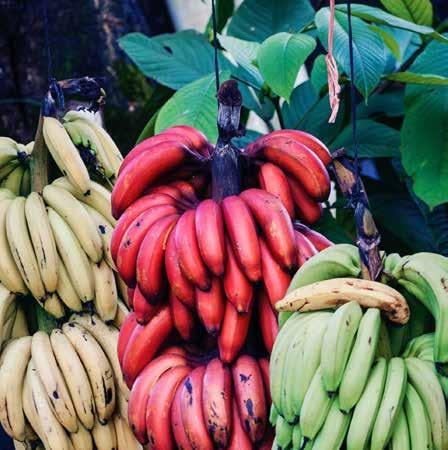
Nitrogen (N)
Phosphoric Anhydride (P2O5)
Potassium Oxide (K2O) soluble in water

Soil Application
All Vegetables
Strawberry
All Field Crops
All Fruit Production
Banana
5-20 kg / ha 5-20 kg / ha5-20 kg / ha 5-20 kg / ha
Foliar
200 – 300 gr / 100 lt
200 – 300 gr / 100 lt
200 – 300 gr / 100 lt
300 – 500 gr / 100 lt
300 – 500 gr / 100 lt

CHARACTERISTICS
High phosphorus content: NPK 10:35 has a significantly high phosphorus content. Phosphorus is crucial for root development, flowering, and fruiting in plants. It supports the energy transfer and storage processes, promotes photosynthesis, and aids in the formation of DNA and cell membranes. Limited nitrogen and potassium: NPK 10:35 has a lower nitrogen and potassium content. Nitrogen is important for overall plant growth and foliage development, while potassium is essential for plant health, stress tolerance, and disease resistance. However, this specific formulation focuses primarily on providing a substantial amount of phosphorus without adding extra nitrogen or potassium. Promotes root development: The high phosphorus content in NPK 10:35 is particularly beneficial for promoting root development. Phosphorus plays a crucial role in root formation, elongation, and overall root system establishment. It helps plants absorb water and nutrients from the soil, leading to healthier and more vigorous root growth. Enhances flowering and fruiting: Adequate phosphorus levels are essential for promoting flowering and fruiting in plants. Phosphorus in NPK 10:35 stimulates flower formation, enhances flower quality, and supports the development of fruits. It can lead to increased flowering, improved fruit set, and enhanced fruit quality. Corrects phosphorus deficiencies: NPK 10:35 can be used to correct phosphorus deficiencies in the soil. If a soil analysis reveals low phosphorus levels, applying this fertilizer can help replenish the nutrient and restore the proper nutrient balance for plant growth. Suitable for specific crops: NPK 10:35 is particularly beneficial for crops with high phosphorus requirements, such as flowering plants, fruiting trees, and crops that demand significant root and flower development. It provides the necessary phosphorus for these crops, supporting their growth, yield potential, and overall health.
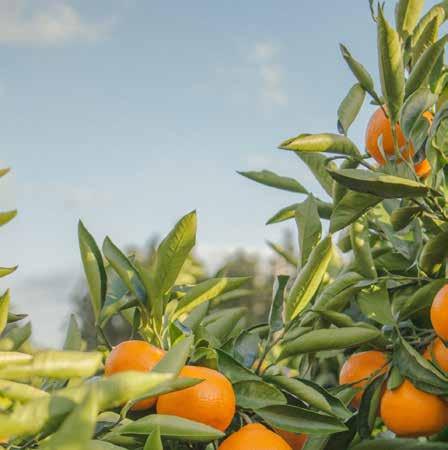
COMPOSITION
Nitrogen (N)
Phosphoric Anhydride (P2O5)
10 35

Flower and ornamental
Fruit
Industrial
Horticultural
200-400 kg / ha
400-600 kg / ha
400-600 kg / ha
400-800 kg / ha
in coverage at the end of winter at sowing at transplanting

WATER-SOLUBLE

CHARACTERISTICS
Devoid of chlorides.
Inclusive of microelements.
Absolute and instantaneous solubility.
Suitable for chlorineintolerant crops.
Fulfills the demand for both major and trace elements.
DEPART product range consists of advanced watersoluble fertilizers that do not contain chlorides, offering complete solubility without any delay.
DEPART are particularly well-suited for fertigation purposes, especially when cultivating chlorine- or salinity-sensitive crops like vines, onions, and tobacco. The inclusion of microelements, expertly chelated with EDTA, ensures that the nutritional requirements of all crops are effectively met.

COMPOSITION
Total nitrogen (N) 20 of which Nitrogen (N) Nitric
Ammonia Nitrogen (N)
Urea Nitrogen (N)
Phosphoric Anhydride (P2O5) soluble in water
Potassium Oxide (K2O) soluble in water
Boron (B) soluble in water
Copper (Cu) chelated with EDTA
Iron (Fe) chelated with EDTA
Manganese (Mn)
Zinc (Zn)

PLANTS DOSAGES
Foliar (lit/ha/m³) Drip (lit/ha/m³)
APPLICATION PERIOD
GRAINS INDUSTRIAL PLANTS
OPEN FIELD VEGETABLES
GREENHOUSE VEGETABLES
FRUIT TREES
ORNAMENTALS
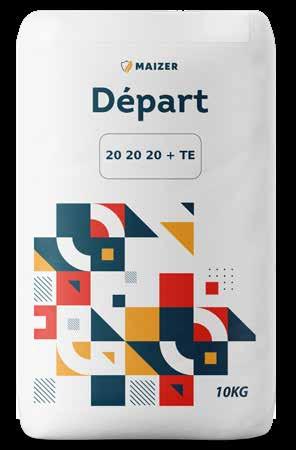
CHARACTERISTICS
Promotes Root Development: The high phosphorus content (52%) in NPK 10-52-10 + TE stimulates root growth and development. Strong and healthy roots are crucial for plants to efficiently absorb water and nutrients from the soil, leading to overall improved plant establishment and growth.
Enhances Flowering and Fruiting: The balanced NPK ratio in NPK 10-52-10 + TE ensures adequate nutrient supply for flowering and fruiting plants. The phosphorus (52%) supports flower formation, while the potassium (10%) promotes healthy fruit development, leading to increased flower and fruit production.
Provides Essential Micronutrients: The inclusion of TE (Trace Elements) in NPK 10-52-10 + TE ensures the availability of essential micronutrients to plants. These micronutrients, such as iron, manganese, zinc, copper, and boron, play vital roles in various plant processes, including enzyme activity, photosynthesis, and overall plant health.
Improves Nutrient Uptake: The balanced nutrient composition of NPK 1052-10 + TE enhances the uptake of nitrogen, phosphorus, and potassium, along with the essential micronutrients. This promotes efficient nutrient utilization by plants, leading to improved growth, vigor, and resilience.
Versatile Application: NPK 10-52-10 + TE can be used for a wide range of crops, including both field crops and horticultural plants. Its versatility makes it suitable for various growth stages, from seedling establishment to flowering and fruiting phases, providing consistent nutrient support throughout the plant›s life cycle.

COMPOSITION
Total nitrogen (N) 20
Phosphoric Anhydride (P2O5) soluble in water
10%

PLANTS DOSAGES
FLOWER AND ORNAMENTAL FRUIT INDUSTRIAL HORTICULTURAL
25-50 kg / ha
25-50 kg / ha
25-50 kg / ha
25-50 kg / ha
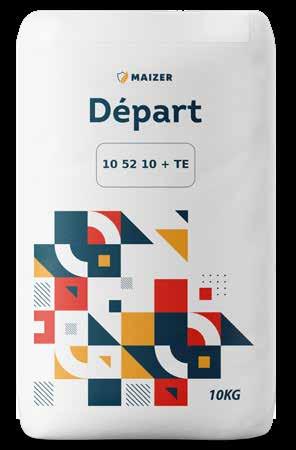
CHARACTERISTICS
10 10 40 + TE COMPOSITION DOSAGE w/w PLANTS DOSAGES 25kg Balanced
Nutrient Supply: The balanced ratio of nitrogen (10%), phosphorus (10%), and potassium (40%) in NPK 10-10-40 + TE ensures that plants receive adequate amounts of essential macronutrients. This balanced nutrient supply supports overall plant growth, improves root development, enhances flowering and fruiting, and promotes overall plant health.
Increased Yield and Crop Quality: The high potassium content in NPK 10-10-40 + TE is beneficial for crop production. Potassium plays a crucial role in fruit quality, improving taste, color, and shelf life. It also enhances crop yield by promoting flower and fruit formation, resulting in higher yields and improved crop quality.
Essential Trace Elements: NPK 10-10-40 + TE includes trace elements such as iron, manganese, zinc, copper, and boron, which are vital micronutrients for plant growth. These trace elements support various metabolic processes, enzyme activity, and overall plant health. They enhance nutrient uptake, promote healthy foliage, and contribute to higher yields.
Versatile Application: NPK 10-10-40 + TE is suitable for a wide range of crops, including field crops and horticultural plants. It can be applied during different growth stages, from seedlings to mature plants. Its versatility allows for consistent nutrient supply, ensuring plants have the necessary elements for optimal growth and productivity.
Enhanced Plant Resilience: The balanced nutrient composition of NPK 10-10-40 + TE supports plant resilience and stress tolerance. Adequate levels of nitrogen and phosphorus promote healthy root systems, enabling plants to better withstand environmental stresses such as drought, diseases, and temperature fluctuations. This leads to stronger, more resilient plants.

COMPOSITION
Total nitrogen (N) 20
Phosphoric Anhydride (P2O5) soluble in water
Potassium Oxide (K2O) soluble in water
PLANTS DOSAGES
10%
10%
40%

APPLICATION PERIOD
All Vegetables
Strawberry
All Field Crops
All Fruit Production
Banana
Soil Application Foliar
5-20 kg / ha
5-20 kg / ha5-20 kg / ha
5-20 kg / ha
200 – 300 gr / 100 lt
200 – 300 gr / 100 lt
200 – 300 gr / 100 lt
300 – 500 gr / 100 lt
300 – 500 gr / 100 lt
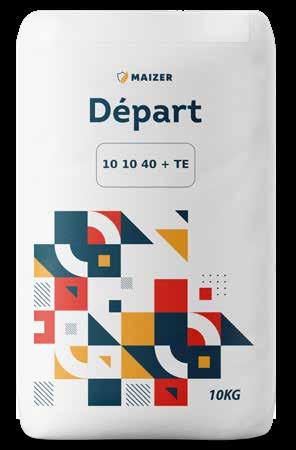
CHARACTERISTICS
contains 12% nitrogen (N), 12% phosphorus (P), and 36% potassium (K). This specific ratio indicates a balanced nutrient profile, with a higher proportion of potassium compared to nitrogen and phosphorus. This type of fertilizer can be suitable for various plants and situations, including:
1- Flowering and Fruiting Plants: The balanced ratio of nutrients can support the overall growth and development of flowering and fruiting plants. It can contribute to healthy vegetation, healthy flowering, and the formation of high-quality fruits.
2- Potassium-Hungry Crops: Certain plants have a higher demand for potassium, such as bananas, potatoes, and tomatoes. This fertilizer can provide the necessary potassium for these crops, promoting their vigor, disease resistance, and fruit development.
3- Stressful Conditions: During periods of environmental stress, including extreme heat, drought, or disease, plants often benefit from increased potassium levels. Potassium helps plants cope with stress, maintain proper water balance, and strengthen cell walls

COMPOSITION

PLANTS DOSAGES
Foliar (lit/ha/m³) Drip (lit/ha/m³)
GRAINS INDUSTRIAL PLANTS
APPLICATION PERIOD
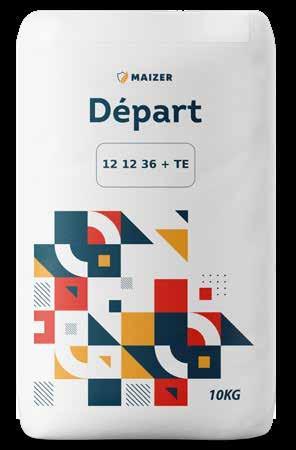
CHARACTERISTICS
High Nitrogen Content: With a nitrogen content of 30%, NPK 30-10-10 + TE provides a significant supply of this essential nutrient. Nitrogen is crucial for promoting vigorous vegetative growth, green leafy foliage, and overall plant development.
Balanced Nutrient Ratios: The balanced ratio of nitrogen (30%), phosphorus (10%), and potassium (10%) ensures that plants receive adequate amounts of these primary macronutrients. This balanced nutrient supply supports various aspects of plant growth, including root development, flowering, and fruit production.
Essential Trace Elements: NPK 30-10-10 + TE also contains essential trace elements (TE) such as iron, manganese, zinc, copper, and boron. These micronutrients are essential for various biochemical processes within plants, promoting enzyme activity and overall plant health.
Versatile Application: NPK 30-10-10 + TE is suitable for a wide range of crops, including both field crops and horticultural plants. Its versatility allows for effective nutrient supplementation across different growth stages, ensuring plants have the necessary elements for optimal growth and productivity.
Improved Plant Resilience: The balanced nutrient composition, especially the presence of potassium, helps enhance plant resilience and stress tolerance. Potassium plays a crucial role in water regulation, nutrient uptake, and overall plant metabolism, making plants better able to withstand environmental stresses such as drought, disease, and temperature fluctuations.

COMPOSITION PLANTS DOSAGES
FLOWER AND ORNAMENTAL FRUIT INDUSTRIAL HORTICULTURAL
25-50 kg / ha
25-50 kg / ha
25-50 kg / ha
25-50 kg / ha


CHARACTERISTICS
Water-soluble fertilizers are designed to be dissolved in water and applied to plants through irrigation systems or by foliar spraying. They provide a quick release of nutrients to the plants, allowing for immediate uptake. The high nitrogen content in this particular fertilizer formulation (30%) is beneficial for promoting vegetative growth. Phosphorus (15%) supports root development and flowering. Potassium (15%) helps with overall plant health, disease resistance, and fruit production.
1-Leafy Vegetables: Crops like lettuce, spinach, kale, and other leafy green
2-Grasses: Lawns and turf grasses 3-Annual Flowers: Many annual flowering plants, such as petunias, marigolds, and zinnias, require sufficient nitrogen for robust foliage growth and abundant blooms. Fast-growing plants: Plants that have rapid growth rates, such as certain fruit trees, corn, or bamboo.

Total nitrogen (N) 20
Phosphoric Anhydride (P2O5) soluble in water
Potassium Oxide (K2O) soluble in water
COMPOSITION PLANTS DOSAGES
VEGETABLES FRUIT FIELD CROPS FLOWERS ORNAMENTAL TREES/SHRUBS LAWNS

APPLICATION PERIOD
10-15 lit/ha per m³
10-15 lit/ha per m³
15-15 lit/ha per m³
10-15 lit/ha per m³
10-15 lit/ha per m³
15-25 lit/ha per m³
5-10 lit/ha per m³
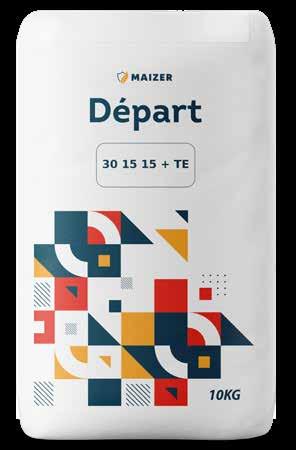
CHARACTERISTICS
Stands for Nitrogen (N), Phosphorus (P), and Potassium (K), are three essential nutrients for the plants and 3-37- 37, represent the percentage by weight of each nutrient in a water-soluble fertilizer.
3% nitrogen (N) 37% phosphorus (P) 37% potassium (K) Nitrogen is responsible for promoting leaf and stem growth. Phosphorus supports root development and flowering. Potassium helps with overall plant health, disease resistance, and fruit production. Watersoluble fertilizers are commonly used for indoor plants, hydroponic systems, or as a supplement for outdoor plants.
1- Flowering Plants: Many flowering plants, such as roses, orchids, and hibiscus, have higher phosphorus and potassium needs during their blooming phase. The higher levels of phosphorus and potassium in this fertilizer can promote robust flowering and improve the quality of blooms.
2- Fruit-Bearing Plants: Fruiting plants, such as tomatoes, peppers, and citrus trees, often require increased phosphorus and potassium levels to support fruit production and quality. This NPK ratio can help provide the necessary nutrients for fruit development and enhance yields.
3- Root Crops: Vegetables like carrots, potatoes, and beets focus on root development, making them benefit from higher levels of phosphorus and potassium. This fertilizer can aid in root growth and overall plant health for these types of crops.
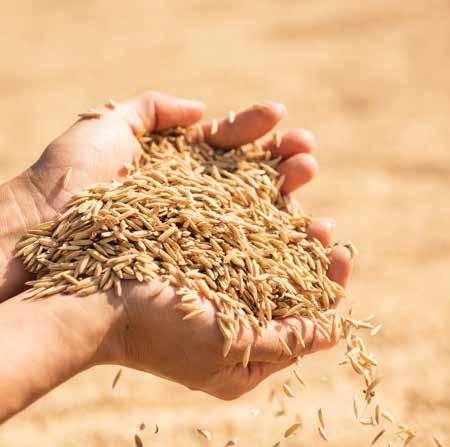
COMPOSITION
Total nitrogen (N) 20
Phosphoric Anhydride (P2O5) soluble in water
Potassium Oxide (K2O) soluble in water
3%

PLANTS
GRAINS INDUSTRIAL PLANTS
OPEN FIELD VEGETABLES GREENHOUSE VEGETABLES FRUIT TREES ORNAMENTALS
DOSAGES
Foliar (lit/ha/m³) Drip (lit/ha/m³)
2-5 5-10
5-10
APPLICATION PERIOD
5-10
10-15
10-15
15-20
20-25
10-15
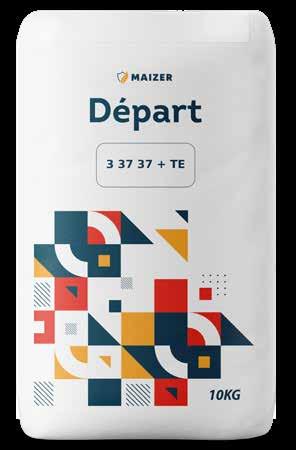
CHARACTERISTICS COMPOSITION
Balanced Nutrient Supply: The balanced ratio of nitrogen, phosphorus, and potassium in NPK 12-36-12 + TE ensures plants receive optimal amounts of these essential nutrients, supporting overall growth and development.
Promotes Root Growth: The high phosphorus content in NPK 1236-12 + TE stimulates root growth, leading to a strong and healthy root system.
Enhances Flowering and Fruit Formation: The phosphorusrich formula promotes abundant flowering and improves fruit formation, resulting in higher yields and better fruit quality.
Improves Stress Tolerance: The presence of potassium enhances the plant›s ability to withstand environmental stresses such as drought and disease, contributing to overall stress tolerance.
Includes Essential Trace Elements: NPK 12-36-12 + TE is fortified with essential trace elements, supporting various metabolic processes and ensuring overall plant health.
Versatile Application: NPK 12-36-12 + TE can be used for a wide range of crops and growth stages, making it a convenient choice for growers.
FIELD CROPS
FRUIT TREES
LEAFY VEGETABLES
FRUIT VEGETABLES
ORNAMENTAL PLANT
25-50 kg / ha
25-50 kg / ha
25-50 kg / ha
25-50 kg / ha



CHARACTERISTICS
With nitrification inhibitor
Reduces nitrogen losses due to washout
Increases the availability of nitrogen
It has an acidifying effect
Increase the yield
18.18.18+TE fertilizers are designed for slow release and contain the nitrification inhibitor 3.4 DMPP (3.4 Dimethylpyrazolophosphate). These fertilizers are suitable for fertigation in various crops, lawns, and tree nurseries.
By incorporating the 3.4 DMPP nitrification inhibitor, Ennnè fertilizers ensure that nitrogen remains available in the soil for an extended period. This helps minimize losses caused by nitrate leaching, especially in situations where frequent irrigation is required.
18.18.18+TE product line has an acidifying effect on the rhizosphere, which is prolonged over time. This effect is achieved through the presence of easily soluble sulfur and ammoniacal nitrogen, which remain in the soil for an extended duration. As a result, the plant can more efficiently assimilate essential nutrients that are typically less mobile in the soil.
In summary, 18.18.18+TE fertilizers with the 3.4 DMPP nitrification inhibitor provide slow-release benefits, reduce nitrogen losses, and enhance nutrient uptake by the plants through prolonged acidification of the rhizosphere.

COMPOSITION
Total nitrogen (N) 20 of which
Nitrogen (N) Nitric Ammonia Nitrogen (N)
Urea Nitrogen (N)
Phosphoric Anhydride (P2O5) soluble in water
Potassium Oxide (K2O) soluble in water
Sulfur trioxide (SO3) soluble in water with nitrification inhibitor 3,4 DMPP (3,4-dimethylpyrazole phosphate)

PLANTS DOSAGES
FLOWER AND ORNAMENTAL FRUIT INDUSTRIAL HORTICULTURAL
25-50 kg / ha
25-50 kg / ha
25-50 kg / ha
25-50 kg / ha

CHARACTERISTICS
Balanced Nutrient Supply: The balanced ratio of nitrogen, phosphorus, and potassium in NPK 16-8-24 + TE ensures plants receive adequate amounts of these essential nutrients. This balanced nutrient supply supports overall plant growth, vigor, and productivity.
Promotes Root Development: The phosphorus content in NPK 168-24 + TE stimulates root growth and development. It helps plants establish a strong root system, improving nutrient uptake and overall plant health.
Enhances Flowering and Fruiting: The balanced formulation of NPK 16-8-24 + TE promotes abundant flowering and enhances fruit set. It supports the development of healthy, vibrant blooms and contributes to the formation of high-quality fruits.
Improves Stress Tolerance: The presence of potassium in NPK 16-8-24 + TE helps plants cope with various environmental stresses, such as drought, disease, and temperature fluctuations. It enhances the plant›s ability to regulate water balance and withstand challenging growing conditions.
Includes Essential Trace Elements: NPK 16-8-24 + TE is fortified with trace elements (TE) that are crucial for plant growth and metabolism. These trace elements support various physiological processes, contributing to overall plant health and productivity.
Versatile Application: NPK 16-8-24 + TE can be applied to a wide range of crops, including both field crops and horticultural plants. Its versatility makes it suitable for different growth stages, from seedling establishment to flowering and fruiting.

COMPOSITION
Total nitrogen (N) 20
Phosphoric Anhydride (P2O5) soluble in water
Potassium Oxide (K2O) soluble in water
16%

PLANTS DOSAGES
Fertigation Foliar
FRUIT TREES POTATO
FRUIT VEGETABLES CITRUS
VINEYARDS STRAWBERRY MELON
150-400 kg / ha
100-200 kg / ha
100-300 kg / ha
150-400 kg / ha
100-250 kg / ha
150-300 kg / ha
150-300 kg / ha
7 – 12 gr / 100 lt
5 – 8 gr / 100 lt
4 – 8 gr / 100 lt
3 – 8 gr / 100 lt
4 – 8 gr / 100 lt
6 – 15 gr / 100 lt
6 – 15 gr / 100 lt

CHARACTERISTICS
Balanced Nutrient Supply: The balanced ratio of nitrogen, phosphorus, and potassium in NPK 20-10- 20 + TE provides plants with a wellrounded nutrient supply. This balanced formulation supports overall plant growth, vigor, and productivity.
Promotes Lush Foliage: The nitrogen content in NPK 20-10-20 + TE stimulates leafy green growth, resulting in lush foliage. This is particularly beneficial for plants that require abundant foliage, such as leafy vegetables and ornamental plants.
Enhances Flowering and Fruiting: The balanced formulation of NPK 20-10-20 + TE supports optimal flower and fruit development. It provides the necessary nutrients for abundant blooms and promotes healthy fruit set, leading to improved flowering and higher-quality fruits.
Strengthens Plant Structure: The phosphorus component in NPK 20-10-20 + TE plays a vital role in strengthening plant structure. It supports root development, stem strength, and overall plant integrity, contributing to better resistance against lodging and damage.
Includes Essential Trace Elements: NPK 20-10-20 + TE is fortified with essential trace elements (TE) that are necessary for various plant processes. These trace elements, such as iron, zinc, and manganese, support enzyme activities and enhance overall plant health.
Versatile Application: NPK 20-10-20 + TE can be used for a wide range of crops, including both field crops and horticultural plants. It is suitable for different growth stages, from seedling establishment to flowering and fruiting.

COMPOSITION
Total nitrogen (N) 20
Phosphoric Anhydride (P2O5) soluble in water
Potassium Oxide (K2O) soluble in water

PLANTS DOSAGES
FLOWER AND ORNAMENTAL FRUIT INDUSTRIAL HORTICULTURAL
25-50 kg / ha
25-50 kg / ha
25-50 kg / ha
25-50 kg / ha
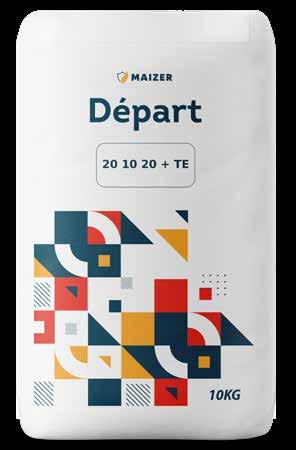
CHARACTERISTICS
Promotes Balanced Nutrition: The balanced ratio of nitrogen (N), phosphorus (P), and potassium (K) in NPK 11-5-41 + TE ensures that plants receive adequate amounts of these essential macronutrients. This balanced nutrition supports overall plant growth, root development, and photosynthesis.
Enhances Flowering and Fruit Production: The high phosphorus content in NPK 11-5-41 + TE is beneficial for flowering and fruiting plants. Phosphorus plays a crucial role in promoting flower formation, increasing fruit set, and enhancing the quality of fruits. It supports the transfer of energy within the plant, leading to improved reproductive processes.
Boosts Root Development: The potassium (K) content in NPK 115-41 + TE aids in root development and improves nutrient uptake efficiency. It helps plants better withstand environmental stresses, such as drought or disease, and enhances their overall resilience.
Includes Essential Trace Elements: NPK 11-5-41 + TE is fortified with essential trace elements (TE) that are vital for plant growth and metabolism. These trace elements, such as iron, zinc, and manganese, support enzyme activities and enhance plant health and productivity.
Versatile Application: NPK 11-5-41 + TE can be applied to a wide range of crops, including field crops, horticultural plants, and fruit trees. Its versatility makes it suitable for various growth stages, from seedling establishment to flowering and fruit development.

COMPOSITION
Total nitrogen (N) 20
Phosphoric Anhydride (P2O5) soluble in water
Potassium Oxide (K2O) soluble in water

PLANTS DOSAGES
FLOWER AND ORNAMENTAL FRUIT INDUSTRIAL HORTICULTURAL
25-50 kg / ha
25-50 kg / ha
25-50 kg / ha
25-50 kg / ha

CHARACTERISTICS
Complete lack of urea.
Diminished salt content.
Suitable for alkaline soils
Ideal for plants that are susceptible to chlorine.
The Hermasol line comprises complex water-soluble fertilizers that are free from urea nitrogen and chlorides, and they are enriched with microelements.
The specific formulation of the Hermasol line, featuring nitric and ammoniacal nitrogen and completely devoid of urea nitrogen, allows for application on soils with a sub-alkaline and alkaline pH reaction, ensuring the appropriate acidification of the rhizosphere. On alkaline soils, the hydrolysis of urea nitrogen into ammonium carbamate would otherwise lead to an increase in soil pH and a decline in crop productivity.

Total nitrogen (N) of which
Nitrogen (N) Nitric
Ammonia Nitrogen (N)
Phosphoric Anhydride (P2O5) soluble in water
Potassium Oxide (K2O) soluble in water
Boron (B) soluble in water
Copper (Cu) chelated with EDTA
Iron (Fe) chelated with EDTA
Manganese (Mn)
Zinc (Zn)
25-50 kg / ha
25-50 kg / ha
25-50 kg / ha
25-50 kg / ha

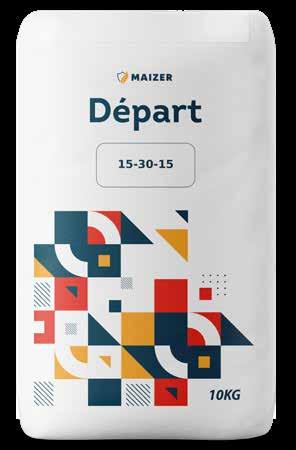
CHARACTERISTICS
Balanced Nutrition: The NPK ratio of 09-0-40 ensures a significant supply of potassium (K) while being deficient in nitrogen (N) and phosphorus (P). This balanced nutrient composition supports healthy plant growth and development.
Potassium Boost: The high potassium content (40) in this formulation promotes enhanced flowering, fruiting, and overall plant vigor. Potassium is crucial for various physiological processes such as osmoregulation, enzyme activation, and nutrient transport within plants.
Chloride-Free: The absence of chloride (0) in the formulation makes it suitable for crops sensitive to chloride toxicity. This allows for safe application on chlorine-sensitive plants, preventing any adverse effects.
Water Solubility: Being water-soluble, this fertilizer dissolves readily in water, ensuring easy application and absorption by plant roots. It facilitates efficient nutrient uptake, particularly in hydroponic or fertigation systems.
Trace Elements (TE): The inclusion of trace elements provides additional micronutrients essential for plant health. These micronutrients, such as iron (Fe), manganese (Mn), zinc (Zn), copper (Cu), and others, play vital roles in enzyme activation, photosynthesis, and overall metabolic processes.
Customizable Application: Water-soluble fertilizers offer flexibility in adjusting nutrient concentrations according to specific crop requirements. This allows for precise and controlled nutrient application, catering to the unique needs of different plants.
Fast-Acting: Water-soluble fertilizers are readily available to plants, ensuring quick nutrient uptake and utilization. This promotes rapid growth responses and helps address nutrient deficiencies promptly.
pH Regulation: Water-soluble fertilizers can influence and regulate soil pH to some extent, depending on the specific formulation. This can be beneficial in adjusting soil acidity or alkalinity, creating more favorable growing conditions for certain crops.

COMPOSITION
Total nitrogen (N)
Phosphoric Anhydride (P2O5) soluble in water
Potassium Oxide (K2O) soluble in water
9 0 40

PLANTS DOSAGES
FLOWER AND ORNAMENTAL FRUIT INDUSTRIAL HORTICULTURAL
25-50 kg / ha
25-50 kg / ha
25-50 kg / ha
25-50 kg / ha
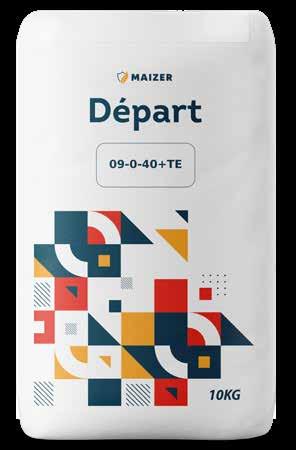
CHARACTERISTICS
Water-soluble NPK 17-07-21+TE offers several advantages for plant growth and development. With a balanced combination of nitrogen, phosphorus, and potassium, it provides comprehensive nutrition to support healthy plant growth. The inclusion of trace elements further enhances plant performance by fulfilling micronutrient requirements. Being water-soluble, it allows for easy application and efficient uptake by plants, making it suitable for hydroponic systems or fertigation. This fertilizer promotes quick nutrient release and absorption, leading to rapid growth responses and improved productivity. Additionally, it offers flexibility in adjusting nutrient concentrations based on specific crop needs, facilitating precise and customizable application. Overall, water-soluble NPK 17-07-21+TE simplifies nutrient management and contributes to optimal plant nutrition for enhanced crop performance.
The water-soluble NPK 17-07-21+TE formulation is designed to provide balanced nutrition and promote plant health. It combines essential elements such as nitrogen, phosphorus, and potassium in appropriate proportions to support key aspects of plant growth. The inclusion of trace elements ensures the availability of micronutrients necessary for vital metabolic processes. This watersoluble fertilizer dissolves readily, allowing for easy application and efficient absorption by plants. Its fast-release nature enables quick nutrient uptake and utilization, leading to rapid growth and development. With the ability to adjust nutrient concentrations, it offers customizable application options tailored to the specific needs of different crops. Overall, the water-soluble NPK 17-0721+TE formulation contributes to healthy plant growth, increased productivity, and improved nutrient management.

COMPOSITION
Total nitrogen (N)
Phosphoric Anhydride (P2O5) soluble in water
Potassium Oxide (K2O) soluble in water
17 7 21

PLANTS DOSAGES
FLOWER AND ORNAMENTAL FRUIT INDUSTRIAL HORTICULTURAL
25-50 kg / ha
25-50 kg / ha
25-50 kg / ha
25-50 kg / ha

CHARACTERISTICS
High Nitrogen Content: The significant nitrogen (N) content of 31 promotes lush foliage growth, vibrant green coloration, and overall plant vigor. Nitrogen is crucial for the formation of proteins, enzymes, and chlorophyll, which are essential for various physiological processes.
Balanced Phosphorus and Potassium: The balanced ratio of phosphorus (P) and potassium (K) at 11-11 supports root development, flower formation, and fruit production. Phosphorus is involved in energy transfer and promotes strong root systems, while potassium enhances disease resistance, water regulation, and overall plant health.
Quick-Release Fertilizer: The high solubility of this fertilizer allows for rapid nutrient release and availability to plants. This ensures prompt nutrient uptake, enabling fast growth responses and efficient correction of nutrient deficiencies.
Trace Element Support: The inclusion of trace elements provides essential micronutrients that support optimal plant growth. These trace elements, including iron (Fe), manganese (Mn), zinc (Zn), copper (Cu), and others, play critical roles in enzymatic activities, photosynthesis, and overall metabolic processes.
Versatile Application: NPK 31-11-11+TE can be used for various crops and in different cultivation systems, such as field crops, horticulture, and greenhouse production. It caters to the nutrient requirements of a wide range of plants, promoting healthy growth and higher yields.
Convenient Nutrient Management: The balanced NPK ratio simplifies nutrient management, as it provides a comprehensive blend of essential elements in a single fertilizer. This facilitates accurate and convenient application, ensuring plants receive the necessary nutrients for optimal growth.
Increased Crop Productivity: The combination of high nitrogen, balanced phosphorus and potassium, along with trace elements, promotes robust plant growth, enhanced flowering, and improved fruit or yield quality. This leads to increased crop productivity and overall agricultural profitability.

COMPOSITION
Total nitrogen (N)
Phosphoric Anhydride (P2O5) soluble in water
Potassium Oxide (K2O) soluble in water
31 11 11

PLANTS DOSAGES
FLOWER AND ORNAMENTAL FRUIT INDUSTRIAL HORTICULTURAL
25-50 kg / ha
25-50 kg / ha
25-50 kg / ha
25-50 kg / ha

CHARACTERISTICS
Balanced Nutrition: NPK 10-5-15 provides a balanced combination of nitrogen, phosphorus, and potassium, supporting overall plant health and development. Nitrogen promotes growth, phosphorus aids in root and flower development, and potassium enhances stress tolerance.
Rapid Nutrient Availability: This water-soluble fertilizer quickly dissolves, making nutrients readily available for plants. It ensures efficient nutrient uptake by plant roots, leading to fast growth responses.
Versatile Application: NPK 10-5-15 is suitable for various crops and can be applied through different methods such as irrigation, foliar spraying, or hydroponics, offering flexibility in application.
Customizable Nutrient Concentrations: Water-soluble fertilizers allow for precise nutrient management by adjusting concentrations based on specific crop needs. This ensures optimal nutrient utilization and reduces the risk of imbalances.
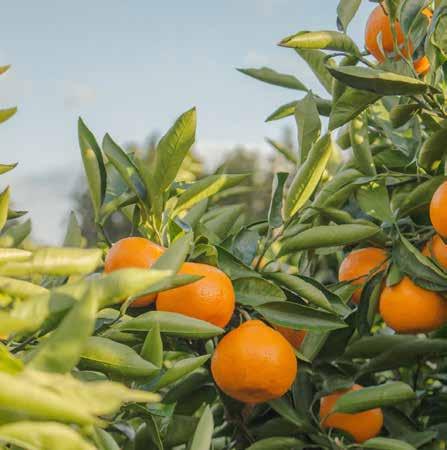
COMPOSITION
Total nitrogen (N)
Phosphoric Anhydride (P2O5) soluble in water
Potassium Oxide (K2O) soluble in water
10 5 15

PLANTS DOSAGES
FLOWER AND ORNAMENTAL FRUIT INDUSTRIAL HORTICULTURAL
25-50 kg / ha
25-50 kg / ha
25-50 kg / ha
25-50 kg / ha
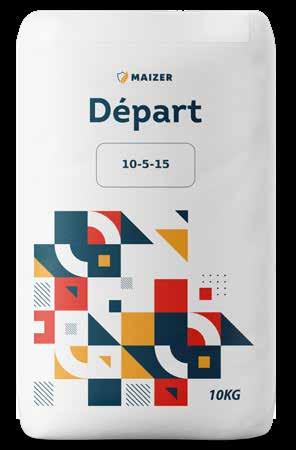
RAW-MATERIAL

CHARACTERISTICS
DAP is granulated manufactured in a high-tech way and dried for easy storage and use by farms and contains essential and micronutrients that meet plant needs. It is used between 300-500 kg / hectare as needed, repeated for all types of field crops, fruit trees and vegetables.

COMPOSITION
Nitrogen (N)
Phosphorus (P2O5)

PLANTS DOSAGES
FIELD CROPS
FRUIT TREES
VEGETABLES
300-500 kg / ha
300-500 kg / ha
300-500 kg / ha

CHARACTERISTICS
Completely soluble in water without any precipitation occurring.
The chlorine and sodium levels are minimal or low.
Devoid of heavy metal elements.
Appropriate for use in nutrient solutions.
Acidic pH
Enhanced development of roots
Increased flowering in crops.
MAP is a pure and residue-free form of monoammonium phosphate (12-61-0) that is completely soluble in water.
Both the nitrogen and phosphorus present in MAP 12.61 are easily absorbed by plants.
It is recommended to use MAP during the early stages of plant development when a significant amount of phosphorus is needed to promote root growth. Additionally, during the flowering phase, MAP can be used to fertilize the flowers.
MAP can be combined with other fertilizers to provide crops with the necessary nutrients throughout the entire growth cycle. However, it should not be mixed with calcium-based and magnesium fertilizers when preparing a concentrated solution.

COMPOSITION
Total Nitrogen
Ammonial Nitrogen Phosphorus Pentoxide (P2O5) water soluble

PLANTS DOSAGES
CITRUS
VINEYARD
HORTICULTURAL CROPS in open field
HORTICULTURAL CROPS in greenhouse FLOWERS
APPLICATION PERIOD
80 – 100 kg/ha
80 – 90 kg/ha
60 – 70 kg/ha
70 – 80 kg/ha
30 – 50 kg/ha

CHARACTERISTICS
Completely soluble in water without any precipitation occurring
The chlorine and sodium levels are minimal or low. Devoid of heavy metal elements.
Acidic pH
Characterized by a low salinity index
Enhanced coloration and increased resistance to mechanical damage
Stimulated root development
MKP is a fully water-soluble monopotassium phosphate (0-52-34) that leaves no residue behind.
MKP is most effective during the initial stages of plant development when a significant amount of Phosphorus is required to promote root growth. It can also be applied before flowering and after fruit set to enhance flower fertilization and facilitate fruit growth.
MKP provides crops with an adequate supply of both Phosphorus and Potassium and serves as a valuable Phosphorus source for soilless crops. Additionally, it aids in the ripening of fruits after the fruit set stage. MAP can be combined with other fertilizers to provide crops with the necessary nutrients throughout the entire growth cycle. It›s important not to mix the concentrated solution

COMPOSITION
PHOSPHORUS PENTOXIDE (P2O5) water soluble
POTASSIUM OXIDE (K2O) water soluble
52% 34%

PLANTS DOSAGES
CITRUS & OLIVE TREE
WINE GRAPES
TABLE GRAPES
POME & STONE FRUITS
KIWI
HORTICULTURAL CROPS in open field
HORTICULTURAL CROPS in greenhouse
FLOWERS
APPLICATION PERIOD
30 – 40 kg/ha
35 – 45 kg/ha
40 – 50 kg/ha
30 – 40 kg/ha
35 – 45 kg/ha
30 – 40 kg/ha
40 – 50 kg/ha
50 – 55 kg/ha

CHARACTERISTICS
UP Urea Phosphate is a highly concentrated and pure crystal hydrosoluble fertilizer. It contains significant levels of urea nitrogen and Phosphorus.
For optimal results, UP is best applied during the early stages of plant growth, as this is when plants have a high demand for Phosphorus to support the development of a strong and healthy root system.
The unique composition of UP creates a powerful acidifying effect, which serves to cleanse and eliminate any build-up or deposits within the fertigation system. It also helps release essential trace elements from soil colloidal particles, making them available for plant uptake.
Using pure salts for fertigation enables precise adjustment of nutrient supply to meet the specific requirements of different crops.
UP UREA PHOSPHATE is a water-soluble fertilizer presented in crystalline form, distinguished by its high purity and elevated concentrations of Ureic Nitrogen and Phosphorus. It is recommended for use during the early vegetative growth stage, as plants have a substantial need for phosphorus to establish a well-developed root system.
Its unique formulation possesses a strong acidifying action that facilitates the release of trace elements from soil colloids and helps maintain a clean irrigation system by preventing blockages.

COMPOSITION
Total Nitrogen (N)

PLANTS DOSAGES
VINEYARD
POME FRUIT STONE FRUIT CITRUS
KIWI
OLIVE TREE
TROPICAL TREE STRAWBERRY
HORTICULTURAL CROPS in open field
HORTICULTURAL CROPS in greenhouse FLOWERS
100 – 200 Kg/ha
80 – 120 Kg/ha
100 – 200 Kg/ha
100 – 200 Kg/ha
150 – 250 Kg/ha
100 – 200 Kg/ha
80 – 120 Kg/ha
50 – 60 kg/ha
70 – 100 Kg/ha
50 – 70 Kg/ha
30 – 50 kg/ha

CHARACTERISTICS
Ammoniak offers several benefits as a fertilizer. Firstly, it contains a high nitrogen content of 21%, providing plants with a readily available source of this essential nutrient. Nitrogen plays a crucial role in promoting plant growth and development, particularly in stimulating leaf and stem growth. With Ammonium Sulfate N21, plants can access the nitrogen they need for optimal growth and improved crop yields.
Secondly, Ammoniak also supplies 24% sulfur, which is equally important for plant health. Sulfur is involved in key metabolic processes, such as protein synthesis, enzyme activity, and chlorophyll formation. By incorporating Ammonium Sulfate N21 into fertilization practices, plants can benefit from an adequate supply of sulfur, leading to improved nutrient uptake, enhanced plant vigor, and better crop quality.
In addition to its nutrient content, Ammoniak offers practical advantages. Its high solubility makes it easily absorbable by plant roots, ensuring efficient nutrient delivery. Moreover, its acidifying effect on soil pH can be beneficial for crops that thrive in acidic soil conditions or require lower pH levels. Overall, the versatility, compatibility with other fertilizers, and balanced nutrient content of Ammonium Sulfate N21 make it a valuable choice for promoting healthy plant growth, maximizing crop yields, and maintaining nutrient balance in agricultural practices.

COMPOSITION

PLANTS DOSAGES
Wheat
Barley, oats, rye
Corn
Potato
Tomato
Citrus
Olive tree
100-300 kg/ha
100-300 kg/ha
100-200kg/ha
300-400 kg/ha
200-300 kg/ha
300-500 kg/ha
200-40 kg/ha

CHARACTERISTICS
Fully hydrosoluble
Tickened peel and consequent better mechanical damage resistance
Low in Chlorine
No sulphates
No heavy metals
Suitable for nutrient solutions.
Niagra is a fully water-soluble Calcium nitrate fertilizer that is free of any impurities or residues.
The presence of Calcium in Niagra enhances fruit quality and improves tissue tolerance, resulting in an extended shelf-life for agricultural products.
Since Calcium is not naturally mobile within plants, it must be continuously provided throughout all growth stages to maintain appropriate levels in the foliage and ensure proper plant development.
The Nitrogen content in Niagra is easily absorbed by plants and facilitates the absorption of Calcium as well.
Calcium plays a crucial role in determining the overall quality of fruit-bearing plants, particularly kiwis, from the initial fruit set stage until a few weeks prior to harvest.
Niagra can be combined with any water-soluble fertilizer, except for solutions containing phosphates or sulphates.

COMPOSITION
total NITROGEN (N) of which Nitric Nitrogen (N) of which Ammonical Nitrogen (N) CALCIUM OXIDE (CaO) water soluble

PLANTS DOSAGES
OLIVE TREE CITRUS
WINE GRAPES
TABLE GRAPES
POME & STONE FRUITS
KIWI
HORTICULTURAL CROPS in open field
HORTICULTURAL CROPS in greenhouse FLOWERS
APPLICATION PERIOD
100 – 150 kg/ha
80 – 90 kg/ha
60 – 80 kg/ha
80 – 90 kg/ha
100 – 120 kg/ha
150 – 200 kg/ha
60 – 70 kg/ha
70 – 80 kg/ha
50 – 60 kg/ha

CHARACTERISTICS
Fully water-soluble, no precipitation
Rapid foliar and radical absorption, thanks to the interaction between Magnesium and nitric Nitrogen
Rapid greening effect on the crops
Best photosynthesis process, as Mg is the fundamental element of Chlorophyll
Effective against MgO deficiencies
Also effective in the nutrition of high-pH limestone soils with hard water.
Nimag is an excellent choice for supplying Magnesium through fertigation during critical plant growth stages. Regular applications every 10-15 days are recommended to prevent Magnesium deficiency. Nimag is easily absorbed and ready-to-use, but should not be mixed with phosphate or copper fertilizers or highly alkaline products. Here are some benefits of using Nimag for different crops:
Citrus: Increases Magnesium levels, leading to higher production and larger fruit size.
Grapes: Prevents stalk drying and improves must acidity during preveraison and ripening.
Apple: Combining Nimag with Zinc-based products helps eradicate Zinc deficiency-related diseases and manages premature leaf fall.
Tomato: Enhances fruit production and quality throughout the fructification period.
Potato: Increases dry matter, starch levels, and overall fruit quality.
Wheat: Improves protein content and reduces damages from Septoria and rust diseases. Sugar beet: Increases sugar content and production.

COMPOSITION

PLANTS DOSAGES
CITRUS VINEYARD
HORTICULTURAL CROPS in open field
HORTICULTURAL CROPS in greenhouse FLOWERS
80 – 100 kg/ha
80 – 90 kg/ha
60 – 70 kg/ha
70 – 80 kg/ha
30 – 50 kg/ha
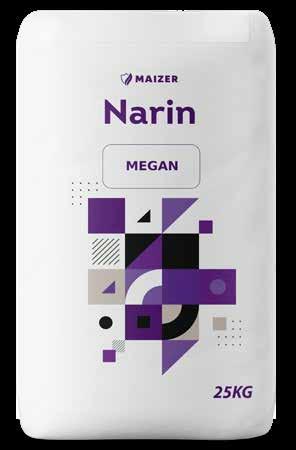
CHARACTERISTICS
Megas is a powder formulation that readily dissolves in water, making it suitable for foliar and root applications to prevent and treat plant diseases across various crops.
Magnesium (Mg) acts as a catalyst in the formation of chlorophyll and proteins in plants. It also plays a vital role in activating enzymes, facilitating nitrate reduction, and participating in the synthesis of ascorbic acid (Vitamin C), which boosts plant resistance against pests.
Magnesium sulfate is widely regarded as the most effective source of magnesium for agriculture. It can be used in fertigation and as a foliar spray.
Megas is compatible with other fertilizers and plant protection products unless specified otherwise by the suppliers. However, it should not be mixed with surfactants, phosphates, alkaline solutions, or any products that may lead to salt precipitation.

COMPOSITION

PLANTS DOSAGES
50 – 60 kg/ha
70 – 80 kg/ha
CROPS
50 – 60 kg/ha
60 – 70 kg/ha
80 – 90 kg/ha
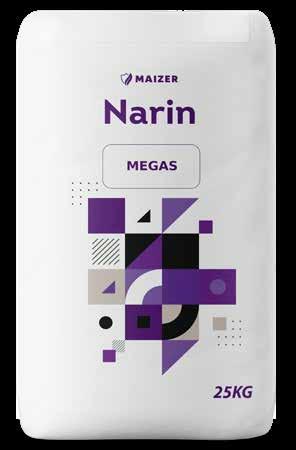
CHARACTERISTICS
Excellent source of Potassium
Most effective fertilization thanks to the interaction between K+ and SO3 ions
Dry matter and sugar content increase
Low in Chlorine, possible cause of phytotoxicity and high soil salinity
Improved fruit colouring.
SOP is a completely soluble fertilizer that is free from any residues. It consists of Potassium and Sulphur, making it highly suitable for fertigation and the formulation of nutrient solutions for soilless crops.
The application of SOP brings about enhancements in both the quantity and quality of crop yields. It elevates the sugar content in plants and promotes the accumulation of reserve substances. Additionally, SOPs acidifying properties contribute to soil improvement, while the significant amount of SO3 facilitates the absorption of nutrients by plant roots. This is particularly beneficial for overcoming nutrient blockages caused by soil colloids.

COMPOSITION
Potassium oxide (K2O) water soluble
Solphur Trioxide (SO3) water soluble 51% 47%

PLANTS DOSAGES APPLICATION PERIOD
CITRUS & OLIVE TREE
WINE GRAPES
TABLE GRAPES
POME & STONE FRUITS
KIWI
HORTICULTURAL CROPS in open field
HORTICULTURAL CROPS in greenhouse FLOWERS
250 – 400 kg/ha
100 – 140 kg/ha
120 – 180 kg/ha
100 – 140 kg/ha
130 – 160 kg/ha
100 – 200 kg/ha
150 – 250 kg/ha
100 – 180 kg/ha




